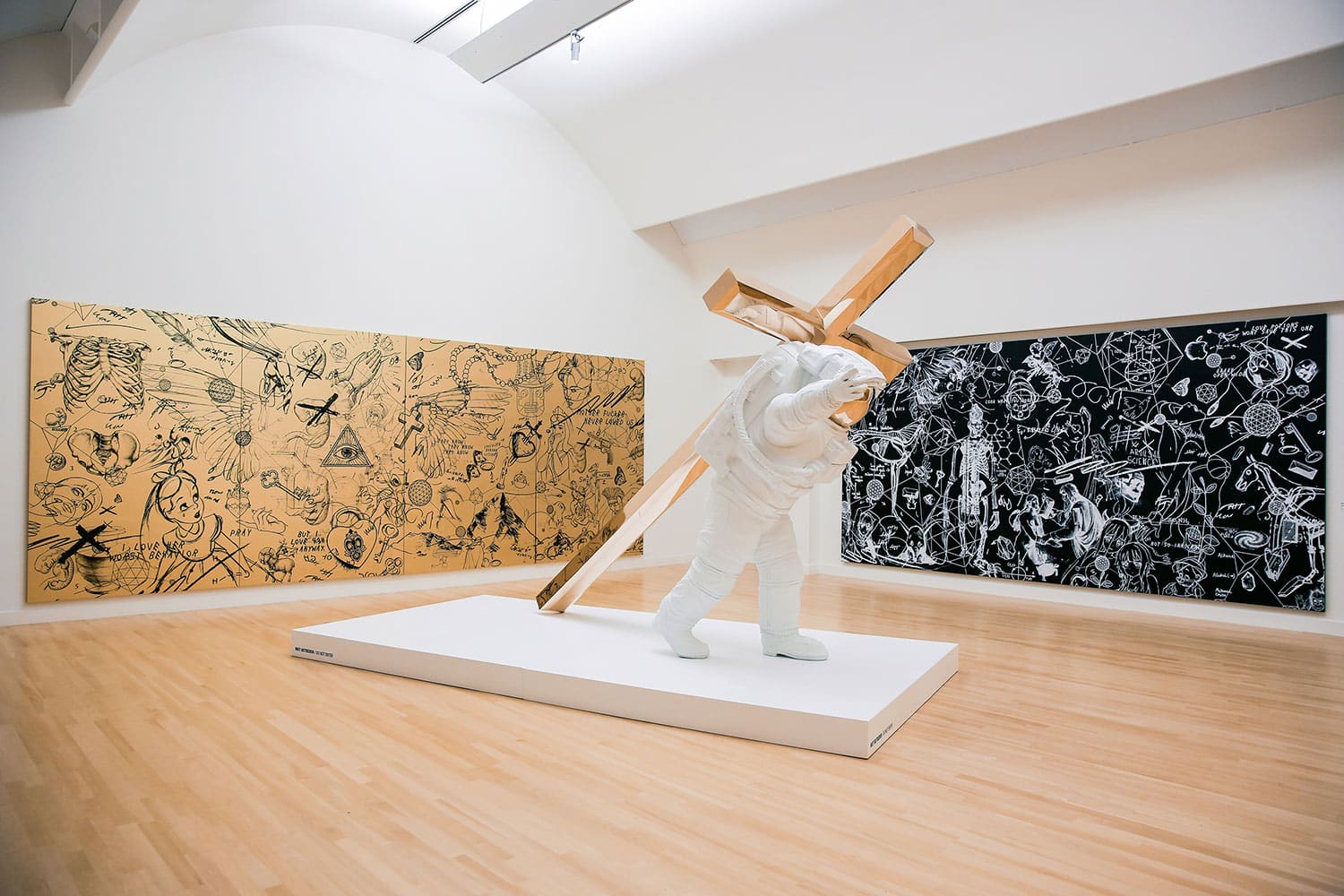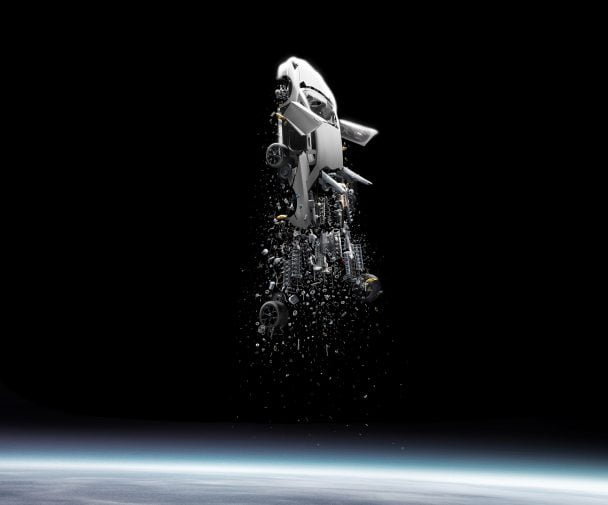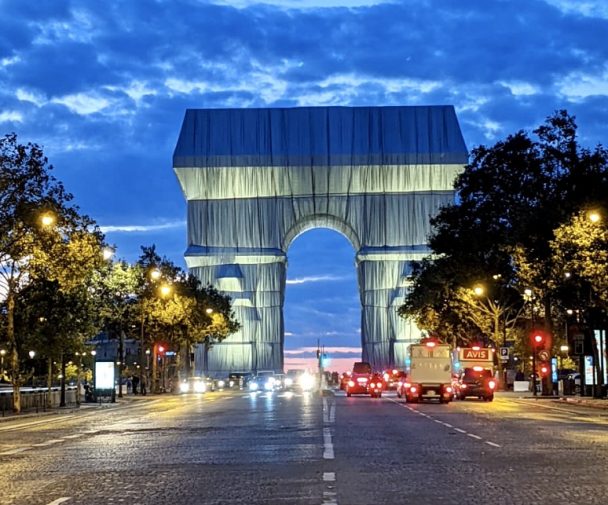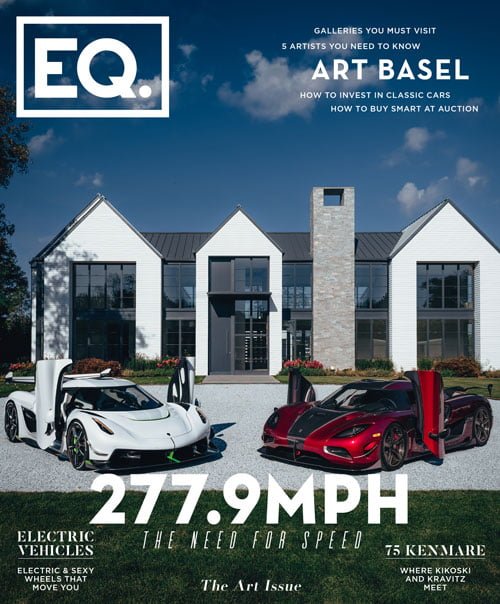
Artist Joseph Klibansky
INTERVIEWED BY PATRICK BRENNAN
A conversation with Joseph Klibansky
Joseph Klibansky is a contemporary artist whose work is highly sought-after by collectors across the world. He is known for using mixed media to create both utopian and dystopian cityscapes and also for a series of thought provoking pop art inspired bronze cast sculptures that shed light on the burdens of success and wealth. Born in South Africa in 1984, Klibansky is based in the Netherlands where he attended business school before pursuing his passion for art. I recently spoke to him about his art, life and passion for supercars.
PB: I’d like to start with your earlier work the mixed media paintings of surreal cityscapes where you juxtapose architecture with slices of urban and natural landscapes. Tell me about your concept.
JK: The concept was experimentation combining the high pace of modern city life with the slow motion of nature to question what would happen if we just let nature go and grow and take back the city to create a utopian co-existence between nature and city life. I used well known backdrops the cities such as London, Hong Kong and Paris because they all have different vibes that I wanted to explore.
PB: In the last 3 years you have been working on a series of Pop Art inspired sculptures including “Reflections of Truth”. This is a striking series, tell me more about it.
JK: In “Reflections of Truth,” I used Pinocchio as a metaphor for modern society and introduced the diamond to represent the craving for success and wealth. In the first piece Pinocchio is on his knees, mesmerized by the diamond ring. He craving success and wealth, his tongue is hanging out and his nose is already starting to grow through the ring. The second piece depicts the burden of wealth, the diamond has grown and is weighing him down, he is succeeding but he is feeling pressure from all sides. In the third piece Pinocchio finds himself flattened beneath the diamond because everything has become so much more stressful. What I want this series to say is that you must be self-reflective on this journey, how far do I want to go? When do I want to stop? How complicated is my life? How does this affect my family? There are so many things to think about and this series highlights these thoughts and reflections. I think many of your readers can relate to this as they have achieved success and many of them have achieved massive success.
PB: It sounds very personal, is this how you reflect on your journey?
JK: Yeah, of course. When I started out, I was the first piece, craving for the success and recognition in a healthy way and then the pressure became bigger and was happening simultaneously because my collectors and clients were millionaires and billionaires so for them it was the now and for me it was the future so it was a very interesting dynamic.
PB: You switched from business school to art. To some that may seem like a surprising switch, was art always part of your life and what prompted the switch? Does your business background play a role in how you develop and plan your career?
JK: Most people are pre-programmed that if you do a certain education you’ll stay in that lane but one can be interested in many different things. I am interested in technique in art, business, history, Science in so many different things and believe that if I didn’t discover art at a young age, I could have been a Michelin star chef or a property developer. Creativity in general can be expressed through art but also through business because creativity is basically a freer mind that can have solutions for many different problems and when I observe the people around me who are in general business and are stuck, I would usually have five different options for their problem that they don’t see because my mind is more free and doesn’t work within the same boundaries. So for me the switch from business school was 100% natural. Don’t forget that art is business because you want to create something that is in many cases very expensive to produce. You’re producing something that is impractical and people don’t need in the sense of needing a roof over their head or food so it is basically a luxury to own art. You have ideas as an artist that you want to materialize and you hope that you find someone that can connect to that so there’s a lot of business connected with art but the most Important thing is that it stays pure and that you make it with a pure intention not with business in mind but what do I want to express and how do I want to convey this message as an artist? Then you hope that someone will see that vision and love that vision and will want to buy into that vision by collecting that piece but art has to come from a pure intention. We manage and run a studio with a staff of 30 people and very expensive equipment, we have our own bronze foundry and they’re all very big investments but we do it all for quality control. That’s the real business part at the end of the day, managing the studio and being able to produce quality pieces consistently over your lifespan.
PB: Your 2017 exhibit “Leap of Faith: at the Museum de Fundatie in Zwole” was hailed as a great success with the pieces coming together in the perfect space. How hands-on are you in the curation of your exhibits?
JK: While I am the artist and very hands on, it is totally a team effort involving my father, mother, brother and wife as well as my external team and when we do an exhibition like “Leap Of Faith”, it really is all hands on deck. For example, we are doing a massive show in Guangzhou, China that opens on November 29th and runs until March 2020 and we are all heavily involved in every aspect of this show which is going to be about 800 square meters with a 10 meter sculpture outside. We are working with K11 which is listed on the Hong Kong Stock Exchange and is the brainchild of Adrian Cheng. K11 is developing a number of shopping centers across the region in which they are curating amazing art experiences within the shopping centers to create unique shopping experiences for their shoppers. We are all working very closely with the K11 team and if all goes well the show will be traveling to multiple locations in China which is an exciting prospect for me.
PB: I am familiar with K11 and have closely followed what Adrian Cheng and his team are doing to drive art across the region, I think they’re a great group.
JK: Yes they are very, very dedicated and we are working day and night to set up this exhibition, to get all the works. We are creating experiences, it’s not just shipping out paintings and sculptures but we are creating spaces of about 160 to 180 square meters apiece because we really want to create experiences by building something very, very special.

PB: I am fascinated by the creative process and technique behind the creation of “caught up in a dream” speak about the importance of the process.
JK: For this series, I started with four paintings and wanted to use a screen printing technique that was actually used by Andy Warhol. I started with rough canvas and layered the paint on it very thickly. Then I splashed paint on it in order to create elements of speed and to get a different pattern in every piece which ensures that each one is unique. I then created the drawings for the four paintings, create foils, enlarge the foils, use screen printing techniques to create the frames and a UV emulsion that I then burn out with light. After that I wash the screens and push the ink through with a squeegee to create one image. Once it’s complete, I destroy the screens and I love it because once the screen is gone, it’s gone. It’s like a traditional hand printing technique which is important especially in an age when we do all this digital printing, I like to go back to the basics.
PB: Changing gears, quite literally, a large number of our readers are collectors of classic cars and supercars so could you tell me a little about your car collection and how you started collecting.
JK: For me it was always a dream to own these vehicles and I started at quite a young age and was lucky because my art was successful and I was able to follow my passion. My first real, real car was a Maserati GranTurismo and I bought that car and couldn’t believe, when I drove away, that it was actually mine! My next car was a white Ferrari 458 a most extreme, crazy car ever for anyone to have especially for a young guy. I then fell in love with McLaren and my first McLaren, was a 570S. After the 570S, I bought a 720S and now own a 600LT Spider.
PB: So are you a confirmed McLaren guy or is there something else sitting in your garage?
JK: Yes, I also have a Ferrari 488 Pista and before that I had an 812 superfast. Ferrari invited me over for an interview at the factory and we built up a special connection because while they have many business people as clients, they are looking for other types of clients such as athletes and artists. There are not many artists that drive these cars and are proud of it because art can be seen as a pure form of expression and fast cars can be seen as materialistic but I feel that it’s automotive art and is an extension of art, technology and design which I really appreciate it because it brings a lot of excitement and emotion.












